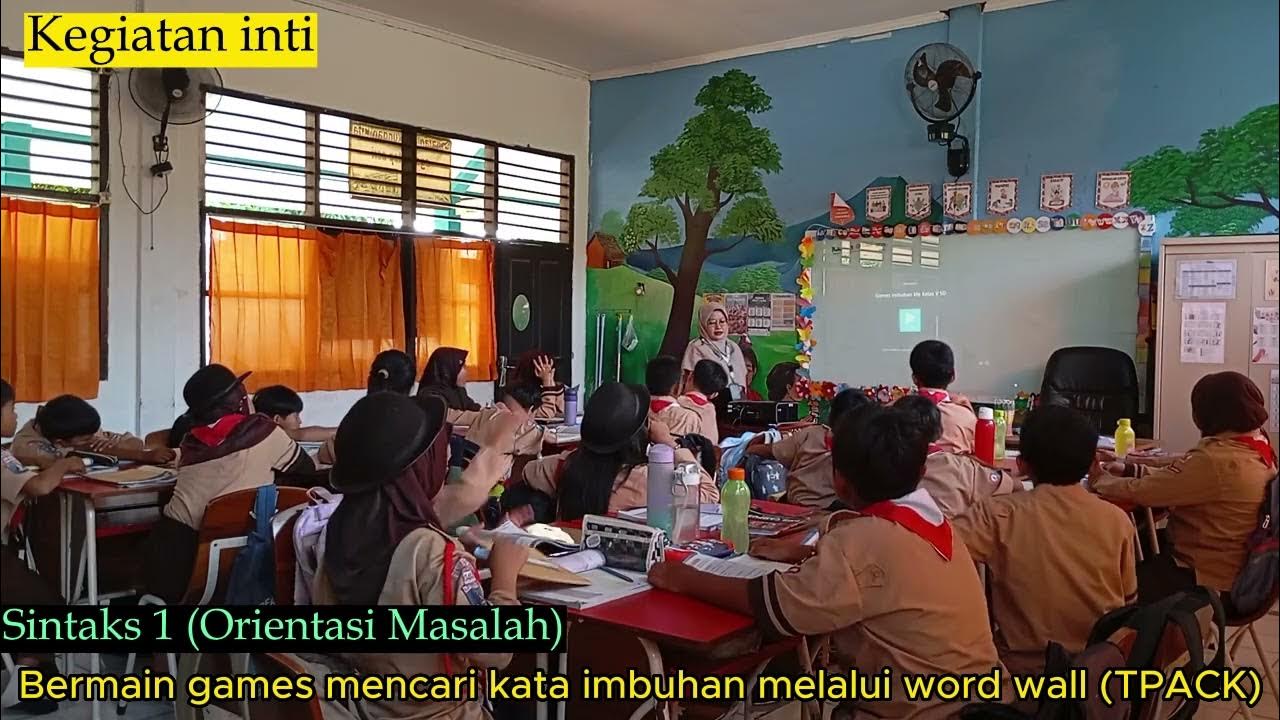Model PjBL Berbasis TIK dalam Pembelajaran IPAS Fase C Kelas V SD | Membuat Diorama Rantai Makanan
Summary
TLDRIn this interactive classroom session, students learn about food chains and ecosystems within rice fields. Guided by their teacher, Pak Dedi, they explore the relationships between plants and animals, such as how rice is eaten by pests like rats and grasshoppers, which in turn are preyed upon by other animals like birds and snakes. The lesson includes watching educational videos, creating dioramas to illustrate the food chain, group discussions, and evaluations. The hands-on activities promote collaboration and deepen students' understanding of ecological balance.
Takeaways
- 😀 The lesson begins with a greeting and a morning song to motivate the students for the day.
- 😀 The teacher introduces the topic of the day: understanding the food chain and ecosystem, focusing on the rice field (sawah) ecosystem.
- 😀 The students learn about different animals and plants found in rice fields, such as rice, corn, frogs, and snakes, and their roles in the ecosystem.
- 😀 The concept of the food chain is introduced, explaining how different organisms consume each other and maintain balance in the ecosystem.
- 😀 The class is asked to identify animals that harm rice crops, such as rats and grasshoppers, and how these creatures are also part of the food chain.
- 😀 The students are divided into groups to watch a video on food chains and then present their findings to the class.
- 😀 The concept of producers and consumers in a food chain is discussed, emphasizing how energy flows from plants to animals and eventually to decomposers.
- 😀 The teacher shows a video on how to create a diorama of the food chain in a rice field, providing a hands-on learning opportunity for the students.
- 😀 After watching the tutorial, the students are asked to create their own dioramas in groups, using materials like pencils, scissors, and printed images of animals and plants.
- 😀 The students present their dioramas to the class, sharing their understanding of the food chain and ecosystem.
- 😀 The lesson concludes with a reflection on the interconnectedness of living beings in ecosystems, followed by a song and a prayer to end the day on a positive note.
Q & A
What is the main topic of the lesson discussed in the transcript?
-The main topic of the lesson is the food chain and ecosystem, specifically focusing on the food chain in a rice field ecosystem (sawah). The lesson involves understanding how organisms interact in this ecosystem through consumption and decomposition.
What are the learning objectives mentioned in the lesson?
-The learning objectives are for students to explain the concept of a food chain, create a food chain diorama of the sawah ecosystem, and understand the reciprocal relationships between animals and plants in the ecosystem.
How does the teacher start the lesson and engage the students?
-The teacher begins the lesson with a greeting, followed by a brief morning song. The class then participates in a prayer and stands to sing the national anthem, fostering a respectful and focused atmosphere before the lesson starts.
What example does the teacher give to explain the food chain in the rice field ecosystem?
-The teacher gives the example of rice being eaten by pests like locusts and rats, which are then consumed by birds and snakes, demonstrating the flow of energy through the food chain in a rice field.
How do students demonstrate their understanding of the food chain?
-Students demonstrate their understanding by watching a video on food chains, discussing what they learned, and then creating a diorama of the food chain in a rice field. They also answer questions about the components of a food chain.
What is the purpose of the diorama activity in the lesson?
-The diorama activity aims to help students visually represent the food chain in a rice field ecosystem. It encourages creativity and reinforces the understanding of how producers, consumers, and decomposers interact in an ecosystem.
What are the key components of a food chain discussed in the class?
-The key components of a food chain discussed include producers (plants like rice), primary consumers (herbivores like rats and locusts), secondary consumers (carnivores like snakes and birds), and decomposers (organisms that break down dead matter).
How does the teacher evaluate the students’ understanding of the lesson?
-The teacher evaluates students through their participation in the diorama project, their responses to questions about the food chain, and an assessment at the end of the lesson.
What lesson does the teacher want the students to learn about the interconnectedness of life?
-The teacher emphasizes that all living things are interdependent. For example, rats cannot live without rice, and snakes cannot live without rats. Similarly, humans rely on each other for survival, teaching the importance of kindness and cooperation.
How does the teacher wrap up the lesson?
-The teacher wraps up the lesson by having the students sing a traditional song and then concluding with a prayer, fostering a reflective and respectful ending to the day's activities.
Outlines

Этот раздел доступен только подписчикам платных тарифов. Пожалуйста, перейдите на платный тариф для доступа.
Перейти на платный тарифMindmap

Этот раздел доступен только подписчикам платных тарифов. Пожалуйста, перейдите на платный тариф для доступа.
Перейти на платный тарифKeywords

Этот раздел доступен только подписчикам платных тарифов. Пожалуйста, перейдите на платный тариф для доступа.
Перейти на платный тарифHighlights

Этот раздел доступен только подписчикам платных тарифов. Пожалуйста, перейдите на платный тариф для доступа.
Перейти на платный тарифTranscripts

Этот раздел доступен только подписчикам платных тарифов. Пожалуйста, перейдите на платный тариф для доступа.
Перейти на платный тарифПосмотреть больше похожих видео

Video Praktik Mengajar Kurikulum Merdeka Kelas 5 dengan "Materi Rantai Makanan"

Rantai Makanan, Jaring-Jaring Makanan, dan Piramida Makanan Pada Ekosistem - Materi Pelajaran IPA

Video pembelajaran 1 tema " Makhluk hidup "

Videoedit Aas Asniawati 23081000696

Food Chains Compilation: Crash Course Kids

IPA - 4.2 - ALIRAN ENERGI DALAM EKOSISTEM
5.0 / 5 (0 votes)
